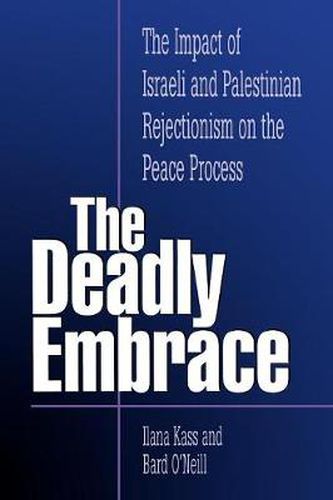Readings Newsletter
Become a Readings Member to make your shopping experience even easier.
Sign in or sign up for free!
You’re not far away from qualifying for FREE standard shipping within Australia
You’ve qualified for FREE standard shipping within Australia
The cart is loading…






The purpose of this book is three-fold. First, drawing on a wide array of primary and secondary sources, it aims to compare and contrast the historical roots, goals, strategies, organizational structures and current activities of Palestinian and Israeli opponents of any mutual compromise. Second, the book assesses the dynamic interaction of two rejectionist movements, espousing mutually exclusive political agendas and demonstrates how they feed off and reinforce each others emnities. Third, the book seeks to expose to public scrutiny the deeply-entrenched phenomenon that has continued to lurk in the shadows, while enjoying both tacit and direct support from segments within the American, Arab and Jewish communities. Although such recent outrages as the Hebron massacre, the Rabin assassination and the spate of suicide bombings in Israel’s cities have re-centred attention on Middle East terrorism, the primary focus has been on lone actions of deranged individuals. In contrast, the authors contend that what we have witnessed thus far is merely the tip of the iceberg - overt manifestations of a deep-seated, festering problem, namely increasingly militant insurgent movements, united in their near-term aim of destroying the peace process, but ultimately sworn to destory each other. The book concludes with a set of policy choices and recommendations which the US, Israel and the Palestinian National Authority should pursue in tandem to marginalize the rejectionist threat, before it escalates to hitherto unimaginable levels of violence.
$9.00 standard shipping within Australia
FREE standard shipping within Australia for orders over $100.00
Express & International shipping calculated at checkout
The purpose of this book is three-fold. First, drawing on a wide array of primary and secondary sources, it aims to compare and contrast the historical roots, goals, strategies, organizational structures and current activities of Palestinian and Israeli opponents of any mutual compromise. Second, the book assesses the dynamic interaction of two rejectionist movements, espousing mutually exclusive political agendas and demonstrates how they feed off and reinforce each others emnities. Third, the book seeks to expose to public scrutiny the deeply-entrenched phenomenon that has continued to lurk in the shadows, while enjoying both tacit and direct support from segments within the American, Arab and Jewish communities. Although such recent outrages as the Hebron massacre, the Rabin assassination and the spate of suicide bombings in Israel’s cities have re-centred attention on Middle East terrorism, the primary focus has been on lone actions of deranged individuals. In contrast, the authors contend that what we have witnessed thus far is merely the tip of the iceberg - overt manifestations of a deep-seated, festering problem, namely increasingly militant insurgent movements, united in their near-term aim of destroying the peace process, but ultimately sworn to destory each other. The book concludes with a set of policy choices and recommendations which the US, Israel and the Palestinian National Authority should pursue in tandem to marginalize the rejectionist threat, before it escalates to hitherto unimaginable levels of violence.